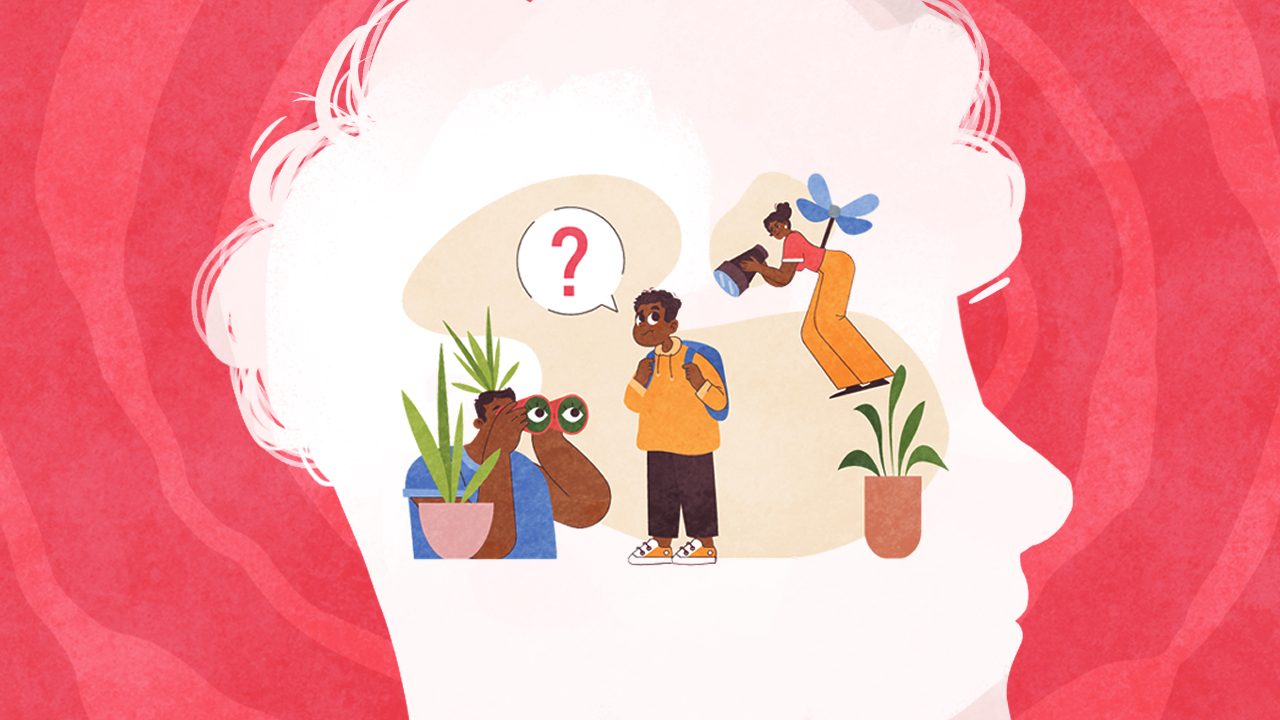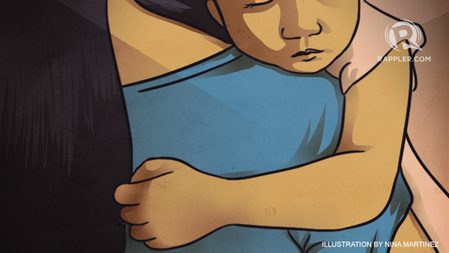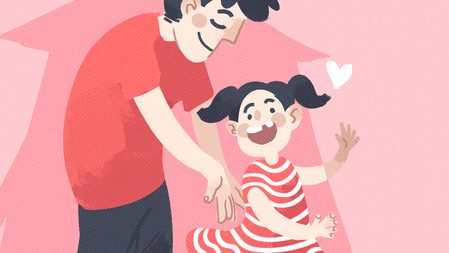SUMMARY
This is AI generated summarization, which may have errors. For context, always refer to the full article.

Strict curfews, monitored messages, and being chided for getting anything less than a 99 on a test – do any of these sound like just another Tuesday night for you? If so, you may be one of many intimately familiar with the “tiger parenting” phenomenon.
Popularized recently by author Amy Chua in her divisive 2011 memoir Battle Hymn of the Tiger Mother, the phrase has now been adopted into the mainstream vernacular as a type of parenting style that prioritizes traditional measures of success and achievement in school and the workplace over a child’s personal goals and happiness.
This type of parenting is best associated with an “authoritative” parenting style, in opposition to other styles that allow parents to be more permissive or uninvolved with one’s children. The tiger parent has come to be most commonly associated with Asian households, often portrayed in opposition to the more lax parenting associated with the West, which prioritizes happiness and personal measures of success above all else.
Vocal proponents of tiger parenting believe this technique to be a surefire way to set their child up for future success, with recent depictions of the tiger parent becoming more nuanced over the past years.
From Turning Red to Everything Everywhere All at Once (and even going as far back as The Joy Luck Club), these pieces of popular media aim to show how tiger parents can come from a genuinely good place of wanting to provide their children with the opportunities they never had.
However, for every person who claims the benefits this technique has had on them, there appear to be just as many stories of people sharing the impact of the immense pressure their tiger parents placed on them that they continue to feel to this day.
As such, an important question remains unanswered: does tiger parenting inherently render a child more vulnerable to familial abuse? It can be extremely difficult to delineate where a valid and unique parenting technique ends and child abuse begins, so how exactly do we begin to tell the difference?
A lesson of control
“There are certain signs that may indicate that tiger parenting has crossed over into abusive territory,” Joel Navarez, a full-time university counselor at De La Salle University-Laguna, told Rappler. While recognition of these signs may vary depending on cultural norms, he cautions that a couple of common indicators can be exhibited.
These include physical punishment that causes injury or harm to the child, persistent emotional harm such as humiliation and degradation, and isolation from friends and other social support systems – all signs that a tiger parent has crossed over into abusive territory. A child living in constant fear of the parent may also be taken as a sign of abusive control.
These are common symptoms associated with child abuse, which has been defined as “any intentional harm or mistreatment [done] to a child,” be that by a peer or by their own parent. This encompasses types of emotional abuse such as injuring a child’s self-esteem and well-being as well as physical abuse wherein the child has been purposely harmed or put at risk of harm.
For Bianca, 22, “fear” was the first word that came to mind when talking about tiger parents. She shared her personal experience with her own tiger mother and how her upbringing continues to affect her up until today.
“I am grateful that my mom was hands-on and was always there for my sister and me,” she wrote, “but I must admit that it also comes with a price.”
Bianca recalled about how her mother was painstaking in helping her with her homework and studying for quizzes; however, making even a single mistake when memorizing terms or failing to understand the lessons quickly enough for her mother’s liking would result in her mother’s anger. She was also forbidden from joining certain extra-curricular clubs that her mom believed would distract from her academics, and wasn’t allowed to have any grade below 90 or have her ranking in the honor roll change.
Her mother would tell her, “Para kanino ba ‘to? Para sa akin ba (Who is this for? Am I doing this for me)?”
Given her experience, Bianca felt that there is a “fine line” when it comes to tiger parenting and child abuse. Parents may not realize, after all, that their child is getting hurt already as a result of their actions. Though her mother had loosened her tight hold on Bianca as she grew up and entered high school, she believed her mother went “overboard” with how much she pushed her daughter to succeed in her academics.
“Without a doubt, I believe [tiger parenting] does help set up a child for success,” Bianca shared. “But at what cost?”
Chai, 46, shared a similar experience – it was her father who was the tiger parent in the household. Even though she similarly excelled in extra-curricular activities such as declamation and oratorical speaking, Chai said her father paid little mind to these achievements as they weren’t in major subjects such as math or science.
As a result, she spoke about having a strong sense of being “controlled,” which has continued to manifest in her life today as disallowing any kind of perceived “weakness” in herself. While Chai wrote about believing it critical for parents to direct and guide the efforts of their child, especially those who may have trouble achieving their personal ambitions, she shared how she felt the strictness she experienced may have been excessive especially given that she was already a good student.
“No parent [wishes] harm to their children,” Chai said. But when taken to the extreme, Chai admitted she could see how the heavy expectations placed on the child could burden them and their well-being for the rest of their lives.
Gabi*, 22, took a firmer stance on tiger parenting, believing the over-emphasis on academic achievement to be inherently harmful.
Gabi found what he saw as young children’s potential being “wasted” due to the pressures they experienced at such a young age “frustrating,” and argued that the process is actually counterproductive to the outcome tiger parents desire, causing children to rebel and seek more autonomy and independence as they grow up.
For Gabi, regardless of how a child is brought up, there will always remain risks to a child’s person when it comes to becoming misguided (“mapariwara”), even with a tiger parent present. The presence of this risk, he said, invalidates the parenting style inherently.
It appears that it’s precisely in instances like these where tiger parenting is taken to the extreme that its effects may be more harmful than helpful. Research has found that tiger parenting, for all of its focus on achievement and hard work, may lead children to develop high stress and anxiety, low self-esteem, and a crippling fear of failure.
And while proponents of the technique believe it to be effective, research has been split as to whether tiger parenting creates the desired results at all. While some studies have found that the “demandingness” and “responsiveness” exhibited by a tiger parent can have a positive impact on their child’s academic performance and cognitive and socio-emotional skills, others find that tiger parenting may actually be linked to a lower GPA and educational attainment than their non-tiger-parented counterparts.
Navarez agreed that when taken to extremes, there are “potential risks” posed by particular aspects of tiger parenting. As the technique is characterized by strictness and high expectations, at its worst, tiger parenting can result in an unhealthy parent-child relationship, causing the child to experience emotional distress and suffer from long-lasting negative effects on their self-esteem and overall mental well-being.
He does, however, took care to emphasize tiger parenting as being distinct from child abuse. Its validity and effectiveness, he said, are strongly dependent on one’s values, cultural background, and beliefs about child development.
As such, Navarez emphasized the importance of setting up parents for success, providing opportunities for them to learn about effective and balanced parenting practices.
Early intervention so that early signs of distress can be detected as early as possible, especially through support systems such as school counselors, healthcare professionals, and child protective services was something he also believed to be critical.
Even author Chua admitted to the ways her tiger parenting came up short and the compromises she’s had to make since in her own book. Described in a review as a “coming-of-age story, where the one to come of age is the parent coming of age as a parent,” Chua’s documentation of her fierce and vicious struggle with her 13-year-old daughter Lulu in her quest to make her a violin prodigy, which she then eventually–- not without blood, sweat, and tears – allows Lulu to win is poignant: “Maybe I finally allowed myself to admire Lulu’s immovable strength for what it was, even if I bitterly disagreed with her choices,” Chua writes frankly.
What it means to be a ‘balanced parent’
More and more in this day and age, the importance of achieving a balance between supporting a child’s individuality as well as maintaining a sense of connection in their family has become increasingly important among Asian and Asian-American households – and the way the tiger parenting technique has evolved and continues to evolve into the present day is indicative of that change.
Thoughtful consideration of the individual needs of the child amidst one’s unique cultural upbringing is something Navarez believed we ought to see more of in the broader discussions we have on parenting styles.
Regardless of the parenting technique parents employ, Navarez wrote: “The key is to approach parenting with an awareness of the individual needs and temperament of the child, considering a balance between setting expectations and providing emotional support.”
There are never any black-and-white answers when it comes to parenting. Being a parent is no easy job, but so is, in its own way, being a child.
Parents hold an immense responsibility in their hands as they start out being solely responsible for making decisions for the best of their child, and that isn’t always easy to discern. Sometimes, as Chua herself admitted, parenting well can mean going against the very principles we hold dear: “In our household, the violin had become a symbol.… For me, it symbolized excellence, refinement, and depth. For Lulu, it embodied oppression.”
Whether you’re a tiger parent or not, it’s apparent that a balanced parenting practice remains the best chance there is at having a meaningful and healthy relationship with parent and child. As we strive to reach out to the people we love, it’s incredibly important to remember that being kind, understanding, and empathetic may be the only thing keeping our family intact.
And so, at the end of the day, which one will truly make our children happy: what we think is good for them, or what they think is good for themselves?
The answer, as it seems, must always inevitably – maddeningly – lie somewhere in between. – Rappler.com
If you believe that you or someone you love may be a victim of abuse, contact the Makabata Helpline 1383 of the Department of Social Welfare and Development.
*names have been changed upon request, and answers have been edited for clarity
Dana Villano is a Rappler intern.
Add a comment
How does this make you feel?



![[Two Pronged] I still love my husband, but I’m having an affair with my ex-boyfriend](https://www.rappler.com/tachyon/2024/07/tp-first-love.jpg?resize=257%2C257&crop=269px%2C0px%2C720px%2C720px)
![[DASH OF SAS] Your privilege won’t protect you](https://www.rappler.com/tachyon/2024/07/divorce-violence-against-women.jpg?resize=257%2C257&crop_strategy=attention)
![[Two Pronged] Am I losing my libido now that I’m hitting my 40s?](https://www.rappler.com/tachyon/2024/07/two-pronged-forties-libido.jpg?resize=257%2C257&crop_strategy=attention)


![[OPINION] LGBT, mental health, and why Pride March is there](https://www.rappler.com/tachyon/2024/06/lgbt-mental-health-june-11-2024.jpg?resize=257%2C257&crop_strategy=attention)
![[Free to disagree] Ending victimhood](https://www.rappler.com/tachyon/2024/05/TL-Ending-victimhood-May-20-2024.jpg?resize=257%2C257&crop_strategy=attention)

There are no comments yet. Add your comment to start the conversation.